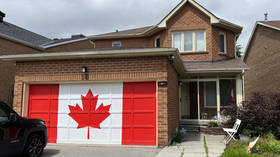Is this the first truly global gas price benchmark?

In the world of energy, size matters. Therefore, large producers and consumers can influence global markets while smaller players have to acquiesce to developments.
One outlier has been the Netherlands, which historically is a 'natural gas country' due to its sizeable reserves. The medium-sized European country's virtual trading hub Titel Transfer Facility, or TTF, is quickly becoming the global benchmark for natural gas. It is an immense asset for a country with an economy the size of the state of Florida.
Also on rt.com Russia & Pakistan agree to build gas pipeline from Karachi to Lahore in biggest deal in decadesTTF was established in 2003 by the country’s TSO Gasunie to promote gas trading in the region and improve liquidity. Back then the UK’s NBP trading hub exceeded TTF by far in importance and size. Ever since trading has expanded massively making the Dutch hub a benchmark for global trade. According to Gordon Bennett, managing director for utility markets at ICE Futures Europe, traders for the TTF benchmark have increased by 164 percent since 2016. “TTF is becoming a global gas marker, it is the ‘Brent’ of the gas market. A lot more participants are coming from outside Europe.”
Several characteristics of the Dutch market have boosted TTF’s rise. The Netherlands’ enormous natural gas reserves have made it the largest producer in the EU. Without a sizeable domestic market, liquidity is hard to find. The country's production capacity has been so large since the 1970s that major volumes have been exported to Belgium, France, Germany, and even Italy. The foundations of TTF’s success were laid decades ago when vast pipeline infrastructure was laid in northwest Europe. Therefore, the hub does not only serve the Netherlands but also neighboring countries.
Domestic reserves are dwindling in Europe which further increases the necessity for imports. Historically the majority of the EU’s foreign gas has come from Russia, Norway, and Algeria. However, the proliferation of LNG has been decisive in boosting trade. The shale revolution in the U.S. and increased LNG exports have helped bolster TTF as Europe is one of two primary buyers markets, together with East Asia.
Also on rt.com ‘Too much hype over environmental friendliness’: Former energy minister says Russian gas four times cleaner than American LNGThe LNG revolution and TTF's rise are closely linked. The majority of international trades used to be done through long-term oil-indexed pricing. The expanding LNG industry has provided the global natural gas market a level of flexibility and liquidity that wasn't possible through more fixed pipeline infrastructure.
According to Patrick Barouki, director of gas trading and origination at German utility Uniper SE, "TTF is the global gas market. Downstream liquidity is essential, showing enough use of gas, a variety of players, enabling people who are just speculating to take positions with confidence. TTF checks all the boxes."
With the end of the Covid-19 pandemic nearing through advances in vaccination across Europe, natural gas demand will increase further. In the past couple of months, futures trading concerning Dutch gas on ICE has increased 24 percent and doubled in the past two years.
Also on rt.com China continues ramping up natural gas productionThe Japan-Korea Marker, or JKM, the benchmark for LNG prices in East Asia has also seen an increase in liquidity over the last few years. However, there isn’t nearly as much trade as TTF. Despite the recent jumps in prices in Asia, such as in January of this year, Asia-based traders have used the Dutch benchmark as an indicator for key sport rates. This includes China and India, besides Japan and South Korea.
With ever-decreasing domestic reserves and rising geopolitical tensions, expect Europeans to take measures to strengthen their energy security. This means that LNG flows can be preferred over natural gas from traditional supplier Russia which overwhelmingly uses pipelines and fixed rates. The growing use of flexible pricing and liquidity will bolster TTF even further which will cement its function as a global benchmark.
This article was originally published on Oilprice.com













